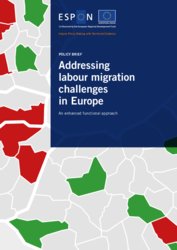Addressing Labour Migration Challenges in Europe
The free movement of labour is one of the “four freedoms” of the European Union and its single market. While many economically dynamic cities and regions have experienced significant in-migration of skilled and semi-skilled workers, other regions, particularly on the European peripheries are dealing with the opposite problem. These migration patterns are resulting in considerable regional disparities and are at the root cause of many of the socio-political challenges facing Europe today. This policy brief is guided by the following questions:
- How can European regions and urban centres be classified in relation to migration patterns?
- What territorial and governance conditions lead to significant out-migration of skilled and semi-skilled workers?
- What are best-practice policies and territorial-administrative governance scales to reverse emigration and attract/integrate migrants and human capital?
The policy brief is mostly based on the results and evidence from the following ESPON 2020 projects: “Geography of New Employment Dynamics in Europe” (ESPON EMPLOY); “Inner Peripheries: National territories facing challenges of access to basic services of general interest” (ESPON PROFECY); “Impacts of Refugee Flows to Territorial Development in Europe” (ESPON MIGRARE). The ESPON 2013 project “Attractiveness of European Regions and Cities for Residents and Visitors” (ESPON ATTREG) has provided valuable insights as well.


